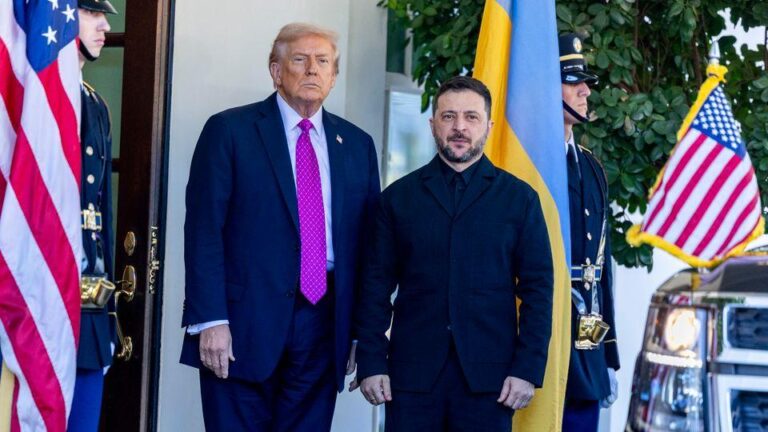Former U.S. President Donald Trump has weighed in on the unconventional proposal of constructing an underwater tunnel linking Russia and the United States. The idea, which has garnered attention for its ambitious scope and geopolitical implications, prompted a response from Trump during a recent interview. Sky News examines the context of the proposal, Trump’s reaction, and the potential challenges surrounding such an unprecedented engineering project.
Donald Trump reacts to proposed Russia US tunnel concept
Former President Donald Trump expressed skepticism over the ambitious proposal to construct an undersea tunnel connecting the United States and Russia. Speaking at a recent rally, Trump emphasized concerns about the project’s feasibility and security, highlighting the potential geopolitical risks involved. “It sounds like something out of a James Bond movie, but when dealing with Russia, you’ve got to be very careful,” he remarked. The billionaire real estate mogul also questioned the massive financial cost and engineering challenges such an undertaking would present.
Trump’s reaction reflects broader public ambivalence surrounding the tunnel proposal, which has sparked debate on multiple fronts:
- Strategic Implications: Potential ease of travel versus national security threats.
- Economic Viability: Estimated cost exceeding $100 billion with uncertain funding sources.
- Engineering Feasibility: Extreme environmental conditions under the Bering Strait.
| Aspect | Trump’s View | Expert Opinion |
|---|---|---|
| Cost | “Too expensive, waste of money.” | High-risk investment with long-term payoffs. |
| Security | “Could be a huge security threat.” | Requires unprecedented safeguards. |
| Feasibility | “Not sure if it’s even possible.” | Technically challenging but not impossible. |
Analyzing the geopolitical implications of an undersea connection between Russia and the United States
The proposal of an undersea tunnel linking Russia and the United States presents a complex web of geopolitical ramifications rooted in both cooperation and competition. Strategically, such a connection could redefine global logistics by fostering a direct land route for trade across the Arctic, which is rapidly becoming a center of economic and military interest. However, the project would inevitably trigger security concerns, as it requires unprecedented levels of trust and transparency between two historically adversarial nations. Enhanced surveillance, border control, and the potential for espionage have already been cited by analysts as significant obstacles to realizing this ambitious infrastructure.
Key geopolitical dimensions include:
- Economic integration: Potential to boost transcontinental commerce but risks deepening dependencies.
- Military strategy: Tunnel could become a critical vulnerability or strategic asset.
- Environmental impact: Arctic ecosystem disruptions may spark international disputes.
- Diplomatic signaling: A physical link symbolizes thawing relations but may provoke other global actors.
| Factor | Potential Impact | Challenges |
|---|---|---|
| Trade Growth | Enhanced US-Russia commerce | Customs, tariffs, political trust |
| Military Security | New defense dynamics | Border monitoring, cyber threats |
| Environmental | Arctic ecosystem at risk | Climate change, habitat destruction |
| Global Politics | Recalibration of alliances | Skepticism from NATO, China |
Experts weigh in on feasibility and strategic recommendations for international infrastructure projects
International infrastructure initiatives of this magnitude often spark intense debate among experts regarding their technical feasibility and geopolitical ramifications. Engineers emphasize the immense logistical challenges posed by a transcontinental tunnel connecting Russia and the United States, highlighting extreme environmental conditions, seismic activity, and the prohibitive costs involved. Meanwhile, geopolitical analysts caution that any such project could become a flashpoint in diplomatic relations, considering the current complexities of US-Russia engagement.
Strategic recommendations converge on a phased and collaborative approach to mitigate risks. Key suggestions include:
- Incremental feasibility studies with multinational input to address engineering and environmental concerns.
- Robust diplomatic frameworks to foster trust and ensure mutual benefit.
- Investment in cutting-edge technology for tunneling and safety systems.
- Transparent communication strategies aimed at securing public support and managing international expectations.
| Factor | Challenge | Proposed Solution |
|---|---|---|
| Engineering | Permafrost and seismic zones | Adaptive tunnel lining materials |
| Cost | High initial investment | Public-private partnerships |
| Political | Geopolitical tension | Joint governance commission |
| Environmental | Marine ecosystem disruption | Comprehensive impact assessments |
Future Outlook
As discussions around the proposed tunnel connecting Russia and the United States continue to capture public imagination, former President Donald Trump’s response adds yet another layer of intrigue to this unconventional idea. While the concept remains largely speculative, the reactions from political figures underscore the broader curiosity and complexities involved in bridging the two nations. Sky News will continue to monitor developments on this story as it unfolds.




